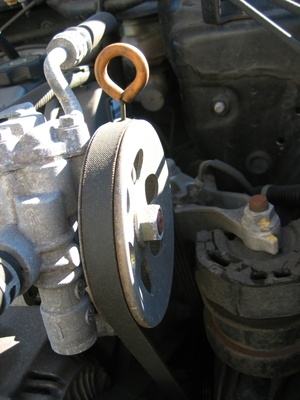
A positive drive belt (or synchronous drive belt) has teeth on its underside to lock with gears cut into the pulley that drives the belt. This configuration delivers torque more efficiently than chain drives or belt drives.
Regular belt drives use friction between the belt and drive pulleys to transfer torque. Positive belt drives do not need friction which increases efficiency.
The gear and tooth configuration delivers a no-slip drive system with a constant speed. This makes the positive drive belt effective as a timing belt in automotive engines.
The lower friction means less wear and tear on the belt. This gives the positive drive belt less down time for repair and replacement of the belt.
Positive drive belts' tooth and gear system requires no lubrication. This is useful in food service manufacturing applications which require contamination-free environments.
The higher efficiency, no-slip and constant speed make positive drive belts unsuitable for high power industrial applications. The lower efficiency of regular drive belts actually serve as a safety valve for high power operations by allowing the belt to slip rather than break.